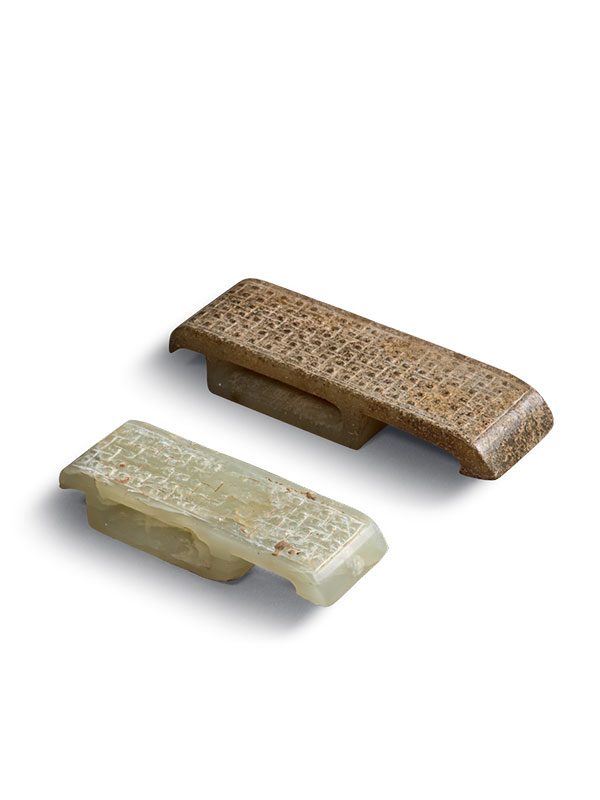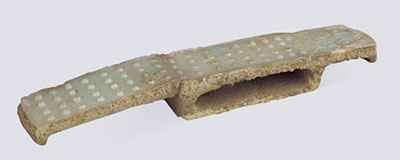A glass scabbard slide and a jade scabbard slide
China, Han dynasty, 2nd – 1st century
Two scabbard slides of typical form. The top of the glass slide is worked in relief with a dense pattern of interlocking raised dots. The material is of a whitish celadon tone and the glass imitates jade both in the so-called “flaws” and in the small areas of breakage. The jade slide has a similar pattern of raised dots, and the celadon coloured material has partly acquired a russet patina, particularly visible on top.
It is obvious that glass would never survive intact as a sword fitting and the conclusion therefore is that it was made as a – successful – imitation of jade. A very similar glass scabbard slide, imitating jade, is in the Muwen Tang collection.[1] A jade scabbard slide of similar form is in the Hotung collection.[2] A glass scabbard slide, the material imitating jade, is inthe collection of the Changsa Museum in Hunan province, China (plate 1).
1 Kwan, S. Early Chinese Glass, The Muwen Tang Collection, The Chinese University of Hong Kong, 2001, nos. 70 pp. 204 + 5
2 Rawson, J. , The British Museum Press, London 1995, no. 21:12, p. 300op. cit. no. 4:6, p. 136
战国/勾连云纹琉璃剑彘&_蒲纹玉剑彘
琉璃剑彘通体呈青白色,表面浅浮雕简易的勾连云纹,背面有一矩形系带孔。这种简易的纹饰出现于东周之后,彼时随着周礼的崩坏,玉器的使用人群扩大,为适应新的市场需求,工匠们将纹饰简化。这件模仿玉器的琉璃剑彘上的纹饰诚实地反映了这一现象。剑彘作为战汉时期流行的剑配饰,多以玉制,琉璃者极其少见且难以保存。
玉剑彘通体呈黄褐色,表面浅浮雕蒲纹,背面有一矩形系带孔,便于革带穿过。其整体皮色协调,刀工流畅,打磨精细。


